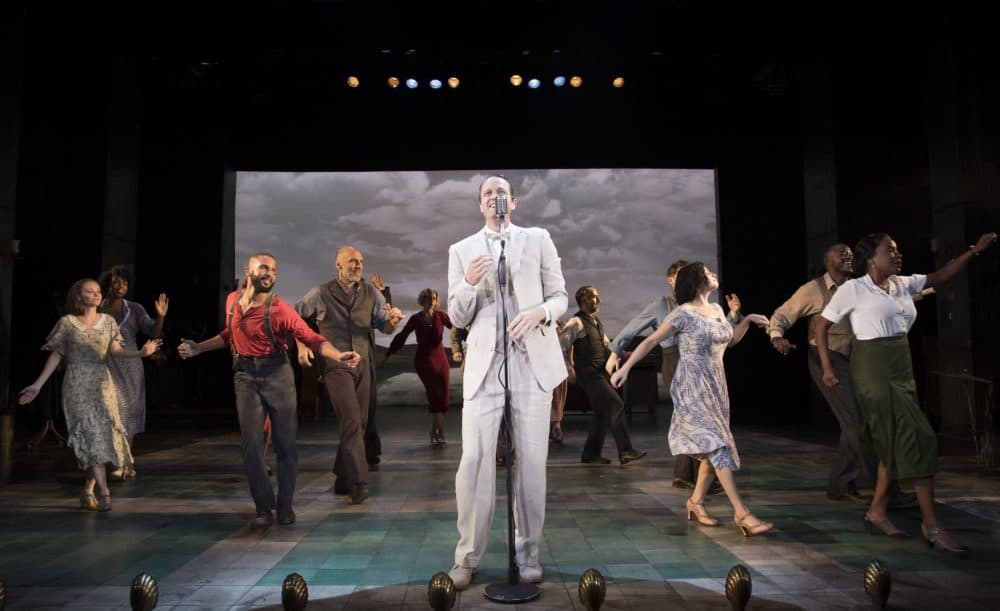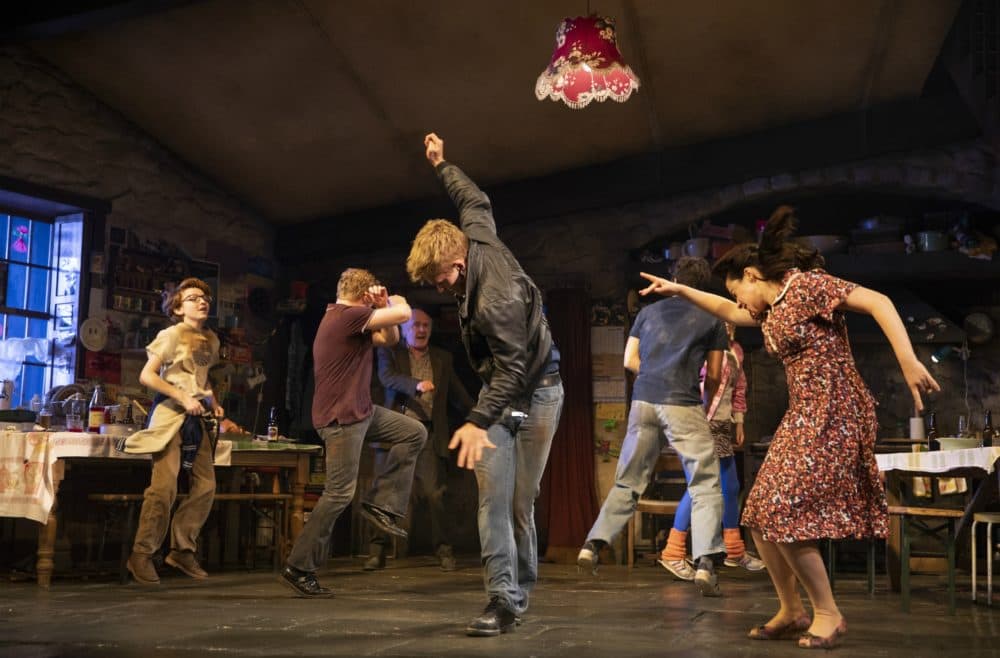Advertisement
Commentary
The Joyful Sound Of Great Theater, Even Amid Unspeakable Sadness

NEW YORK — How is it that two plays that have so much sadness in them can leave you feeling totally spent — but spiritually triumphant? Jez Butterworth’s “The Ferryman,” through July 7 at the Jacobs Theatre, and Conor McPherson’s “Girl from the North Country,” at the Public Theater through Dec. 23, deal with the specifics of Thatcher-era Northern Ireland politics and Depression-era American life, respectively, but hit notes so high that you feel that they’ve just paraded all of human sadness and joy in front of you.
Both these plays began life in England, which even with austerity funding, spends far more money on the arts. “The Ferryman” sports a cast of 22 people (including an infant), a goose and at least one rabbit. “Girl,” recast by the Public Theater, has 17 actor-singers.
Bigger isn’t necessarily better, but it is in these cases. They’re symphonies compared to the growing number of chamber works we usually see in the theater these days. Chamber music is fine, but it’s Beethoven’s Ninth or Mahler’s Second symphonies that produce the communal glory, even amid heartbreak and tragedy, that “The Ferryman” and “Girl from the North Country” sustain.
How? Bob Dylan’s representatives went to McPherson and asked if he’d be interested in writing a play that would incorporate Dylan’s songbook and they gave the playwright, author of some of the best works of the last two decades, carte blanche.
Dylan has turned his songs inside out over the course of 60 years of performing but McPherson does something even more surprising within his story of the biracial inhabitants of a boarding house in Duluth, Minnesota in 1934. Many of the songs are lesser-known pieces from Dylan’s “country” and “Christian” periods, but they sound just as profound here as his more acclaimed work. Speaking of which, “I Want You” is a tearful breakup duet instead of a jaunty song of desire; the wondrous Mare Winningham’s “Like a Rolling Stone” is a down-on-their-luck lament for the whole boarding house instead of Dylan’s anthemic challenge.
It’s the dancing, though, that transports the characters into another almost other-worldly sphere. “Hurricane,” the song of how boxer Rubin Carter was framed for murder, makes you want to get out of your seat and dance along. The joy in “Hurricane” rises from a sense of shared humanity as the characters sing and dance together. Winningham’s character has dementia, but when she breaks into song, she’s more lucid than anyone.
McPherson, who also directed, says in the liner notes to the British soundtrack: “I realized that Bob Dylan’s lyrics were so universal that any character in any play could turn to the audience and start singing a Bob Dylan song — and it would somehow make sense.”
“The Ferryman” begins with Muldoon, a charismatic IRA killer, threatening a priest if he doesn’t betray everything he knows about former IRA member Quinn Carney’s family, information he’s learned from the confessional. The body of Quinn’s brother, missing for 10 years, has just been discovered and Muldoon wants to be sure that none of the Carneys will publicly blame the IRA for the death.
There’s another dementia-bound character here (Aunt Maggie Far Away), stories of lovers who can’t connect and threats from the bank, but amid all this woe the Carneys keep on keeping on — not with family-value sentimentality, but with a gaiety and good spirit that, again, seems to burst through the roof when they get up and dance. This is not, though, a triumphant story, but one that will leave any sentient being shaken.

Will we ever see these two great plays in Boston? I wouldn’t bet the house on it. Butterworth’s equally acclaimed “Jerusalem” from 2009 never made it here. Nor did the Public’s fine 2013 musical by David Byrne, “Here Lies Love.” There is the daunting size of the cast, for one thing. Emerson College had looked into importing productions like this into the Colonial Theatre, but that fell through as did (more fortunately) a proposal to turn it into a cafeteria. Emerson turned to the Ambassador Group folks from England who, so far, make Broadway in Boston’s programming of the Opera House look like the Brooklyn Academy of Music (BAM).
Hopefully, someone in Boston will rise to the challenge and produce these two great plays here. Despite the sadness of the subject matter, “The Ferryman” and “Girl from the North Country” connect us to something universal … and something deeply mysterious. They not only connect you to what makes the theater special, they connect you to what it means to be fully alive, even in perilous times.
“Girl from the North Country” runs through Dec. 23 at New York’s Public Theater, “The Ferryman” through July 7 at the Jacobs Theatre.


